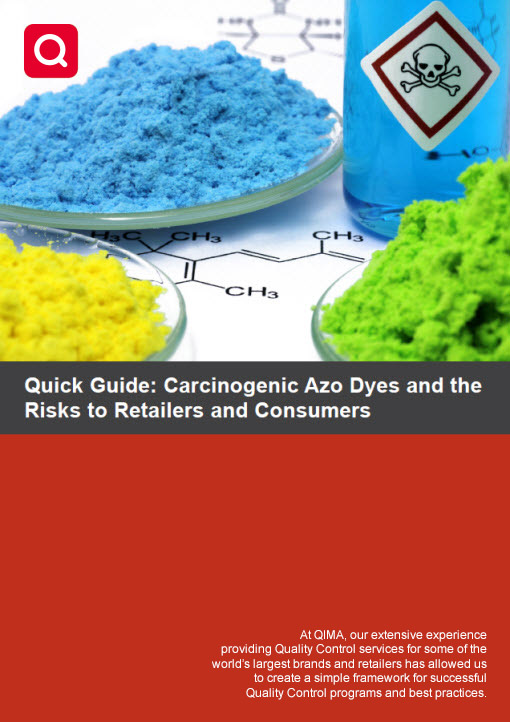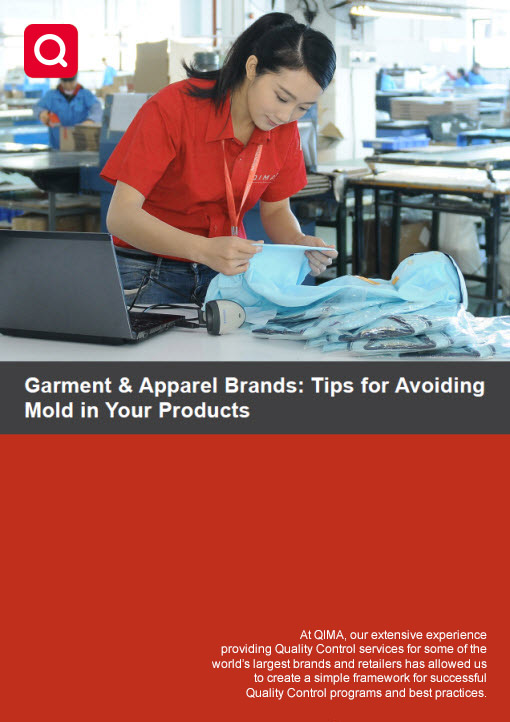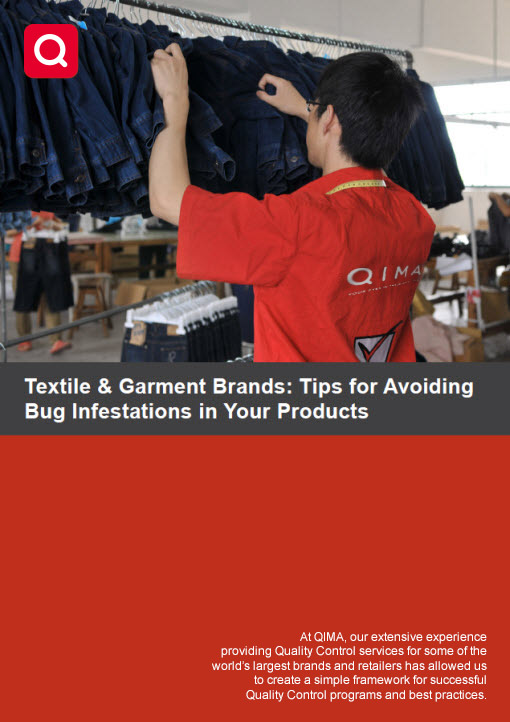Garment Quality Control Checklist for Textile Testing
What Is a Quality Control Checklist for Textile Testing?
A garment quality control checklist is a document used by textile manufacturers and suppliers that clearly outlines product specifications and quality requirements for a particular product.
The garment quality control checklist should be drawn up before production begins, and then used on-site as a reference guide for the manufacturer and supplier throughout the production.
The quality control list can also be referred to as an inspection criteria sheet (ICS), a QC checklist, a quality assurance checklist, or quality control sheet.
Manufacturers may want to have the checklist translated into the supplier’s language to avoid misunderstandings. Here are some of the items included on a garment quality control checklist:
Garment Requirements
- Garment weight and dimensions
- Garment materials
- Garment color (consider including Pantone color codes where applicable)
- Garment markings and labeling such as sizes, textile composition
Packaging requirements
- Packaging weight and dimensions
- Shipper's labeling and marking requirements
- Shipper's boxing material requirements
- Packaging method and assortment
- Retail packaging and labeling specifications
A garment quality control checklist also gives instructions on the instruments that should be used to carry out measurements, and on who should supply those instruments.
The QC checklist ultimately determines what constitutes a pass or fail for the production of a product or parts of a product.
Why Do We Need a Garment Quality Control Checklist for Textile Testing?
As well as outlining quality standards and product requirements for both supplier and manufacturer of textiles, a QC checklist provides objective criteria for inspecting the product to ensure it meets customer expectations.
A quality control checklist can be used by internal or third-party quality control inspectors along with an approved product sample for testing purposes.
Prevention is better than cure
Consider a quality control checklist as a reliable preventative measure against damage control, which allows for any defects to be spotted early on in supply and production, avoiding mistakes that could otherwise go unnoticed and be very costly in the long run.
If you share a detailed quality assurance checklist with your supplier before production begins, the supplier has a chance to review your requirements and let you know whether or not your needs can be met, or suggest any amendments before mass production begins.
Using a quality control checklist ensures the following:
- You, the textile manufacturer, and your supplier avoid conflict or confusion, and have a tangible agreement on your mutual expectations
- Defects in the finished product are prevented
- Your product meets the regulatory standards for your retail market
- Your supplier is held to expectations of product quality and standards
- Quality control inspectors have specific criteria to follow - before, during, and after production
- Shipping requirements are met to avoid product rejection by customs inspectors
Quality Control is Essential for International Regulatory Bodies
Products destined for various international markets may have to meet different safety and quality requirements depending on the destination market’s regulations, so a quality control checklist usually includes a section defining the standards for those specific markets.
Textiles destined for the European Union must comply with REACH directives, while products for the US market are regulated by the Consumer Product Safety Improvement Act (CPSIA). Saudi Arabia has its own standards and regulations under SASO.
The EU’s REACH directives are widely considered a world standard for regulating textiles and all other products for the EU market. Textile manufacturers must be able to prove that any of the toxic chemicals regulated by REACH are within safe limits.
What Should Be Included in a Garment Quality Control Checklist for Textile Testing?
Along with the checklist, the following tools are usually required by quality control inspectors to carry out inspections. You should make sure these tools are either brought by any third-party QC inspectors, or made available for inspections along with your quality control checklist.
1. Measuring tape
Durable strip of flexible plastic or fiberglass with metric (cm) and imperial (inches) measurements to verify general retail packaging and shipping boxes.
2. Dial calipers
More accurate than tape measures, calipers are used for more precise measurements of products such as the thickness of materials.
3. Digital camera
Photographic evidence of defects or before-and-after photos of textiles and products can save a lot of time when any questions need to be answered over long distances.
4. Defect stickers
These are an essential part of the quality inspector’s arsenal, used to easily keep track of products marked as defective as well as to pointing out or describe the defect. Tracking defects with stickers saves time and money.
5. Pantone color swatch
This allows quality control inspectors to make color comparisons during inspections against specific color codes determined by the manufacturer. This Pantone Matching System (PMS) is especially important for maintaining the consistency of brand colors.
6. Barcode scanner
Make sure your quality control inspector is equipped with a barcode scanner, which is essential for keeping track of products throughout the supply chain. The inspector should also note any products or boxes with damaged or missing barcodes.
What Onsite Garment and Textile Tests are Carried Out by Quality Control Inspectors?
1. Pull Test for Garment Accessories
Purpose
A simple pull test to determine the strength of stitching and bonding materials used to attach accessories such as zips, fasteners, and buttons.
Method
International standards dictate the pulling force and duration that the accessory should sustain. Higher standards are generally required for children’s clothing. The inspector uses a handheld pull gauge, or a tabletop pull test machine to pull the attached accessory with a specified force for a certain length of time. If the accessory detaches, then the product fails the test.
Pull Test on Your Quality Control Checklist
Textile and garment factories usually have their own pull test gauge on-site. If neither you nor a third-party inspector has a pull test gauge available, then an experienced QC inspector may be able to do the test by hand. Here’s an example of the columns for the pull test on the quality control checklist:
Checkpoint Description
Pull test for accessories
No. of Samples
2 pcs per style
Example of checkpoint instructions
Apply a force of 6 +/- 0.2kg for 10 seconds using a pull gauge. Accessories must remain securely in place.
If no pull gauge is available test by hand and add a note to the inspection report.
2. Fatigue Test for Garment Accessories
Purpose
To test the function and durability of parts such as zips, fasteners, latches, and velcro with repeated cycles of use to determine the longevity of a product as it is intended with normal regular use by the customer.
Method
Depending on the accessory being tested, the QC inspector fastens and unfastens the item either manually or mechanically with a peel test machine or fatigue tester.
Fatigue Test on Your Quality Control Checklist
The details of the test are written on the quality control checklist in a similar way to the pull test, specifying the number of samples to be tested and the number of cycles. A typical fatigue test would require 50 cycles. If more is needed, it may be necessary to carry out the fatigue test in a laboratory environment.
Example of checkpoint instructions
Check the fasteners (buttons, zippers, velcro etc.) for 50 cycles. Accessories must still be undamaged and still function following the test.
3. Stretch Test for Elastic Fabric and Straps
Purpose
To test the capacity of elastic fabric used in garments such as swimwear, sportswear, and lingerie, or accessories such as straps or waistbands to stretch, elongate and recover.
Method
A straightforward and simple test: the inspector stretches the elastic by hand and checks for any damage to the elastic fibers or loss of elasticity after stretching.
Stretch Test on your Quality Control Checklist
This type of test is usually carried out on a full general inspection sample size, so ‘G’ is written in sample size / quantity column.
Example of checkpoint instructions
Stretch the elastic fabrics and straps to check the elasticity. The fibers of stitches should not break.
4. Buttonhole Test
Purpose
To check for stitching defects and ensure buttons stay securely fastened on garments as well as checking for defects with buttonholes.
Method
The fatigue test is used on buttons to check whether they remain attached. Buttonholes are inspected for the following types of defects:
- Incomplete, skipped stitches, or untrimmed threads around the buttonhole.
- Improperly sized buttonholes
- Buttonholes are sewn in the wrong direction
- Buttonhole fraying around the edges
Example of checkpoint instructions
List the possible defects above in one column then three columns to be checked as Critical, Major, or Minor.
5. Visual Inspections for Accessory Non-Conformances
Purpose
To check whether accessories conform to your specifications, including color, style, brand, and size. This is the opportunity to check whether any accessories have been substituted for inferior ones.
Method
Visual inspection so any defects can be classified on the quality control checklist as Critical, Major, or Minor.
How Can QIMA Help You?
Professional Onsite Garment and Textile Quality Control Inspections
We have fully accredited labs in China, the US, and Hong Kong. Our quality control inspectors can be on-site anywhere in the world within 48 hours to carry out inspections at your supplier’s factory according to your specific requirements.
Whatever your destination market, our quality control inspectors have the knowledge and expertise to advise you on the most suitable tests and testing standards to ensure compliance for your textiles.
Full-Spectrum Chemical and Mechanical Testing Services
Use our fully equipped labs to carry out all types of testing on your textiles with the assurance of transparent results at reasonable prices.
Contact us for an instant quote or more information on how we can help ensure your product gets to your destination market with full compliance.




 Xem Demo
Xem Demo
